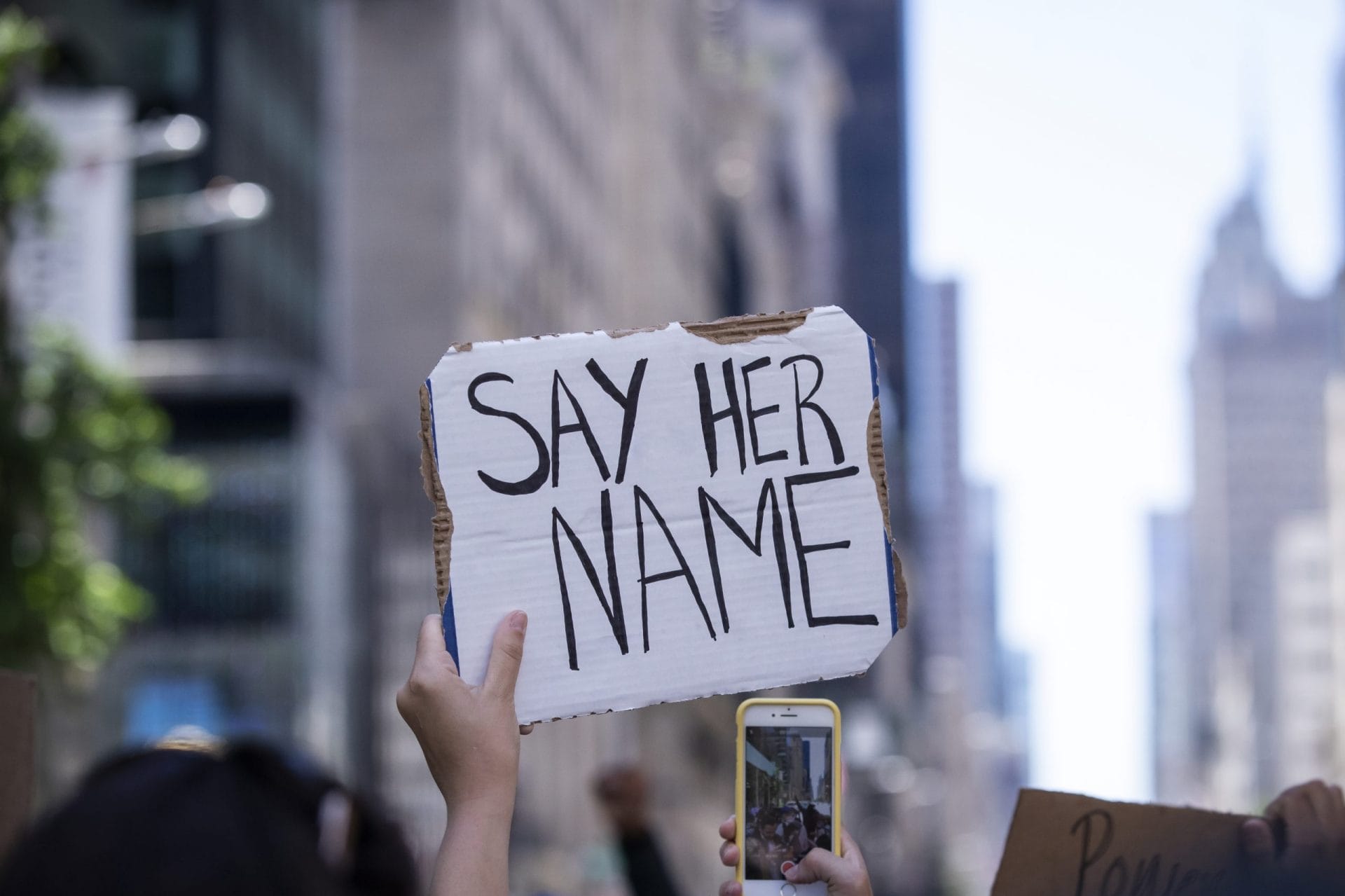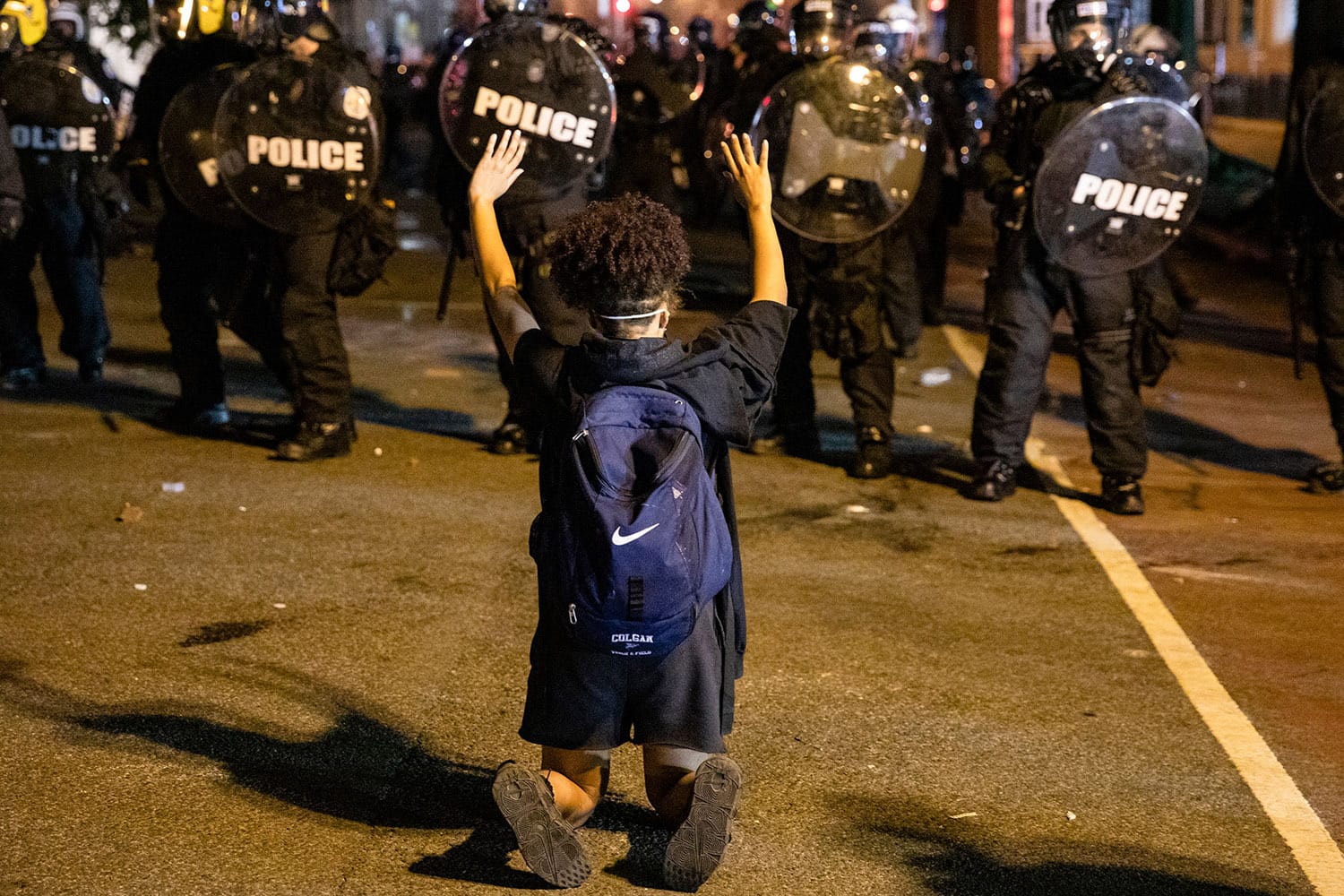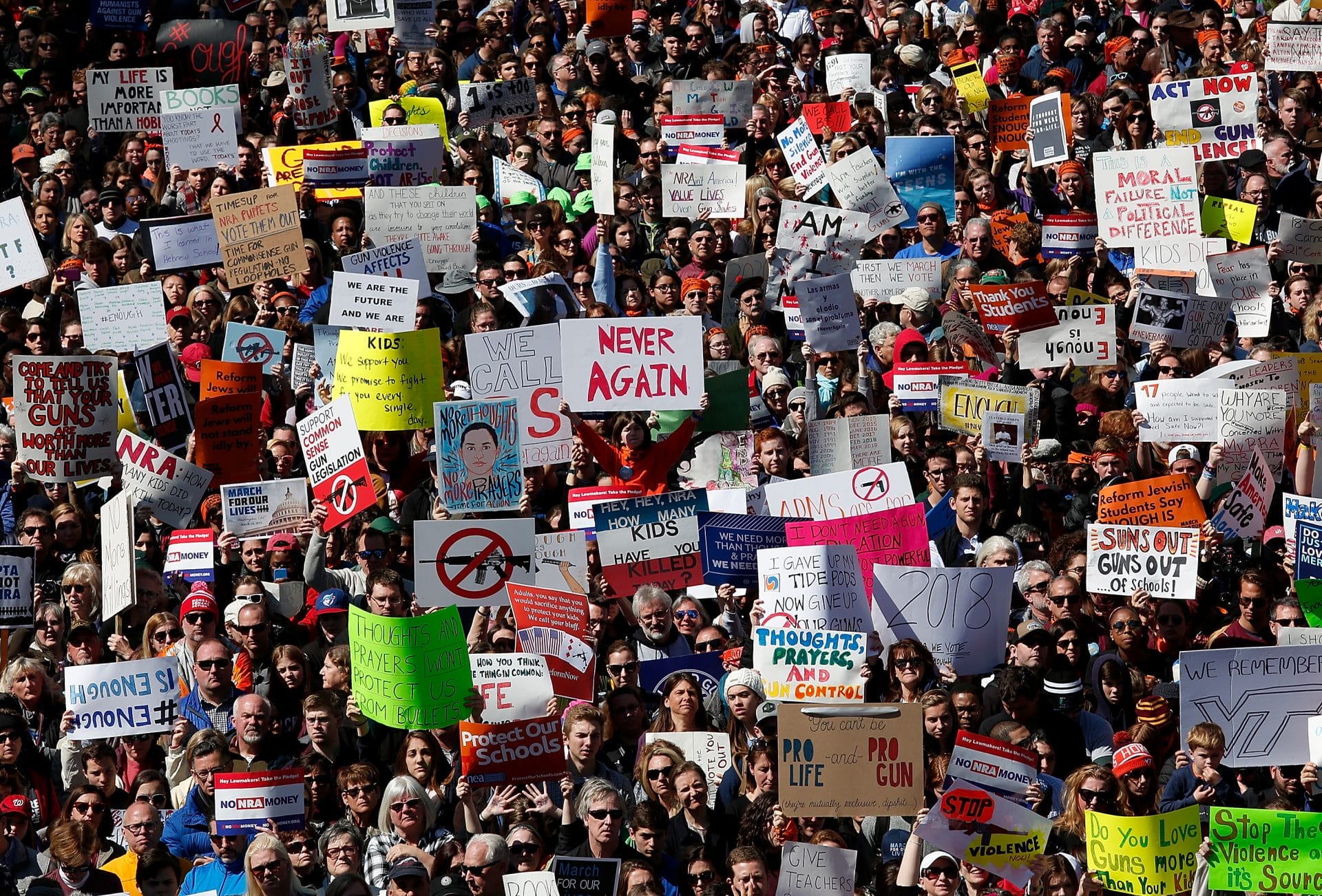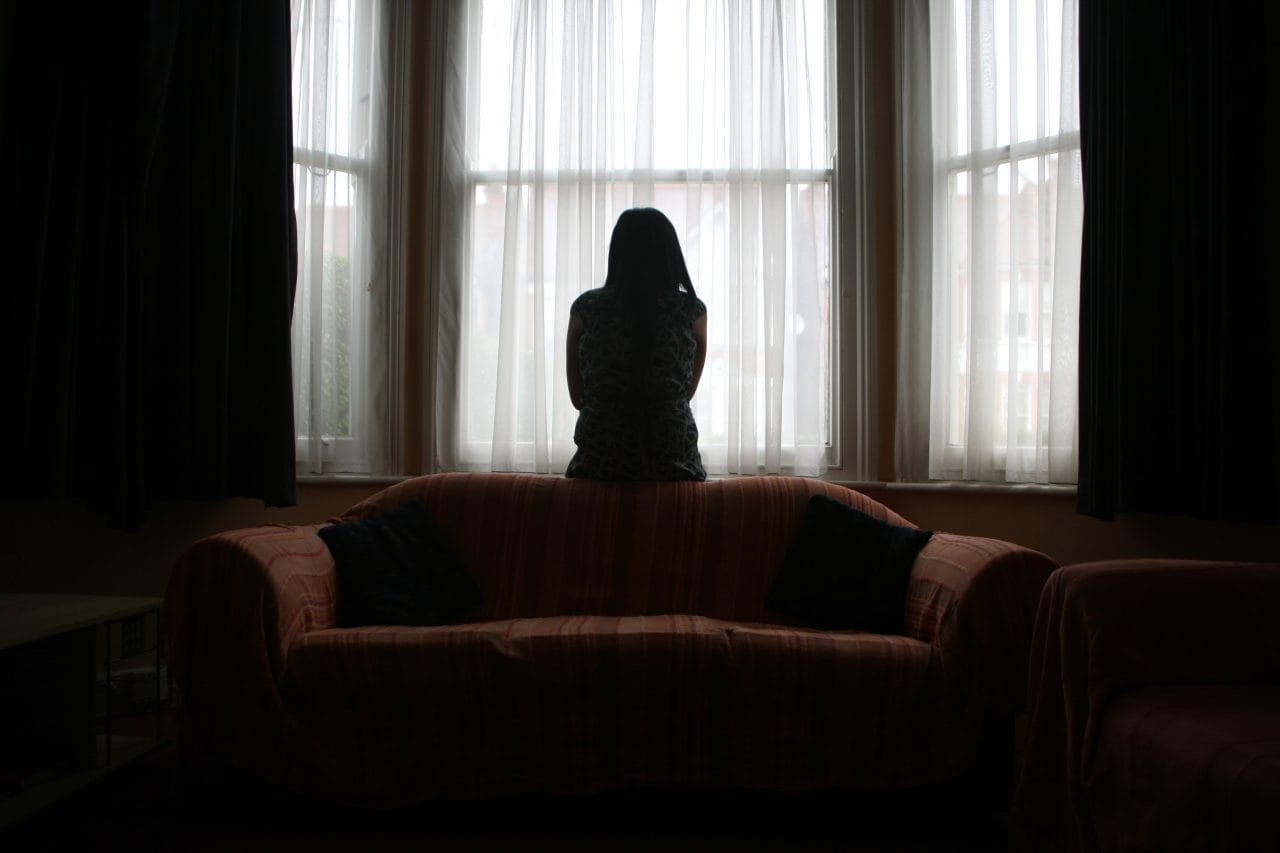
Police violence is gun violence—and it’s long past time that we acknowledge and address it.
Law enforcement officers in the US shoot and kill more than 1,100 civilians each year. Researchers have estimated that on average, an unarmed Black person is three times more likely to be shot and killed by police than an unarmed white person.
Unsurprisingly, police shootings often lead to significant ruptures in police-community trust, contributing to cycles of community violence. When community members feel they cannot rely on law enforcement or the justice system to keep them safe or treat them fairly, witness participation with law enforcement drops, and a small fraction of the population seeks retaliatory vigilante justice instead.
Why This Matters
In March 2020, seven police officers forced their way into Breonna Taylor’s Louisville, Kentucky, apartment using a “no-knock” warrant as part of a drug-related investigation. Breonna Taylor’s boyfriend, unaware that the individuals breaking in were law enforcement officers, fired what he described as a warning shot.
The officers fired 32 rounds, shooting and killing Breonna Taylor.
In May 2020, police officers put Georgia Floyd in a chokehold for eight minutes and 46 seconds in Minneapolis, Minnesota, for suspected use of a counterfeit $20 bill. George Floyd repeatedly told officers he couldn’t breathe and told his mother and kids he loved them.
The police killings of an unarmed Black woman and an unarmed Black man—on the heels of centuries of police violence against communities of color—led to an eruption of protests in the summer of 2020. These murders reinvigorated the national conversation around police reform and reinforced the lack of trust that Black and Brown communities across the country have in the police.
Every instance of police brutality has ripple effects far beyond the family that has a loved one stolen from them. The increased use of body camera footage among law enforcement and availability of this footage to the general public via social media confronts us with the graphic reality of this violence, which we must meet with a sustained policy response.

Spotlight
IN PURSUIT OF PEACE
Our report, How America’s Gun Laws Fuel Armed Hate, examines how our nation’s gun laws allow hate crime perpetrators to access weapons and carry out attacks.
Read MoreThe Problem
According to the Mapping Police Violence database, law enforcement officers fatally shot more than 1,400 Black Americans over the past five years, including at least 130 who were completely unarmed. While there were nearly 230 unarmed white Americans who were fatally shot by police, the racial disparities are clear, given that there are five times as many white Americans as Black Americans.
Police shootings and incidents of police brutality contribute significantly to cycles of distrust and community violence. Researchers call this observable decline in proactive citizen cooperation the “Jude Effect,” named for Frank Jude, who was brutally assaulted by police officers in 2004. The year after the attack on Jude made local news, Milwaukee experienced 22,000 fewer 911 calls, with the most prominent declines in majority-Black and Brown neighborhoods. Despite a significant spike in gun homicides that year, residents didn’t call the police.
Similarly, following the murders of George Floyd and Breonna Taylor in the summer of 2020, homicides skyrocketed in cities around the country. In 2020, 19,384 people were killed in gun homicides—a 35% increase in the gun homicide rate from the previous year. This represented the largest one-year increase in gun homicides on record.
Data aggregated from Twitter shows that in the 10 days after George Floyd was murdered, videos related to racial justice and the Black Lives Matter movement were watched over 1.4 billion times. During roughly the same period, polling data shows sharp decreases in the percent of Americans viewing police favorably and reporting trust in police. Additionally, one analysis of data from eight cities found evidence that citizen crime reporting fell sharply after George Floyd’s death.
THE FACTS
Source
“National Trends,” <i> Mapping Police Violence<i>, last accessed, May 1, 2024, https://mappingpoliceviolence.squarespace.com/nationaltrends.
Source
Federal Bureau of Investigation, Uniform Crime Reports, “Crime in the United States,” last accessed Aug. 14, 2020, https://ucr.fbi.gov/crime-in-the-u.s. Giffords Law Center used Violent Crime Table 8 for the years 2012 and 2018 to pull data for Camden, NJ.
Source
Mapping Police Violence, “National Trends,” last accessed July 27, 2023, https://mappingpoliceviolence.squarespace.com.
The Solution
Policies that promote law enforcement officer accountability, encourage de-escalation of high risk incidents, and prohibit the use of excessive and unnecessary force provide important guardrails against police brutality and promote community dignity and respect.
Numerous studies have found that these reforms help to significantly reduce civilian deaths at the hands of police. For example, a study of 91 large police departments found reforms of use-of-force policies—such as requiring the exhaustion of other means prior to shooting, bans on chokeholds and strangleholds, and restrictions on police shooting at moving vehicles—led to reductions in the number of people killed by police.
Additionally, studies of procedural justice trainings show that such programs can reduce both civilian complaints against police and use of force by police officers against civilians. Another study demonstrated that training police in de-escalation practices resulted in decreases in use of force incidents, citizen injuries, and officer injuries by 28%, 26%, and 36%, respectively.
These studies suggest that concerted, evidence-based reforms to policing in America can help prevent police violence. Additionally, reforms which refocus police efforts on solving a community’s most serious gun crimes, instead of prioritizing low-level offenses, can help rebuild community confidence in law enforcement’s responsiveness to their needs and ability to keep them safe.
What Giffords Is Doing
One example of progress in this arena, covered in our report,In Pursuit of Peace, is Camden, New Jersey. The progress the city made in a few short years is nothing short of transformational. In 2013, Camden disbanded and reconstituted its police force. The new police department directed officers to proactively change the community’s perceptions of the police force and engage in community policing. Officers began new foot patrols and proactively introduced themselves to community members before there was any crime or crisis.
Officers were trained to de-prioritize lower level offenses, such as traffic violations, and respond to these offenses with warnings instead of tickets that carry hefty fines. Camden also adopted a new use-of-force policy with the help of The Policing Project at New York University.
In the two years after the city implemented these reforms, violent crime in Camden fell by 24% and homicides were cut nearly in half. In fact, the number of homicides in Camden fell by two-thirds between 2012 and 2018, down to a three-decade low, even as many other cities across the country experienced large spikes in violence. Excessive force complaints against police have fallen by 95% since 2014. While many cities across the country saw increases in gun violence in 2020 and 2021, available data suggests that gun homicides dropped over this same period in Camden.
GIFFORDS will continue to champion and uplift reforms like those that transformed the Camden County Police Department in cities and states around the country. GIFFORDS also supports Congress passing legislation to fund a long overdue national initiative to interrupt violence, heal communities in crisis, and make our cities safe for everyone who calls them home.
SUPPORT GIFFORDS
We’re in this together. To build a safer America—one where children and parents in every neighborhood can learn, play, work, and worship without fear of gun violence—we need you standing beside us in this fight.



